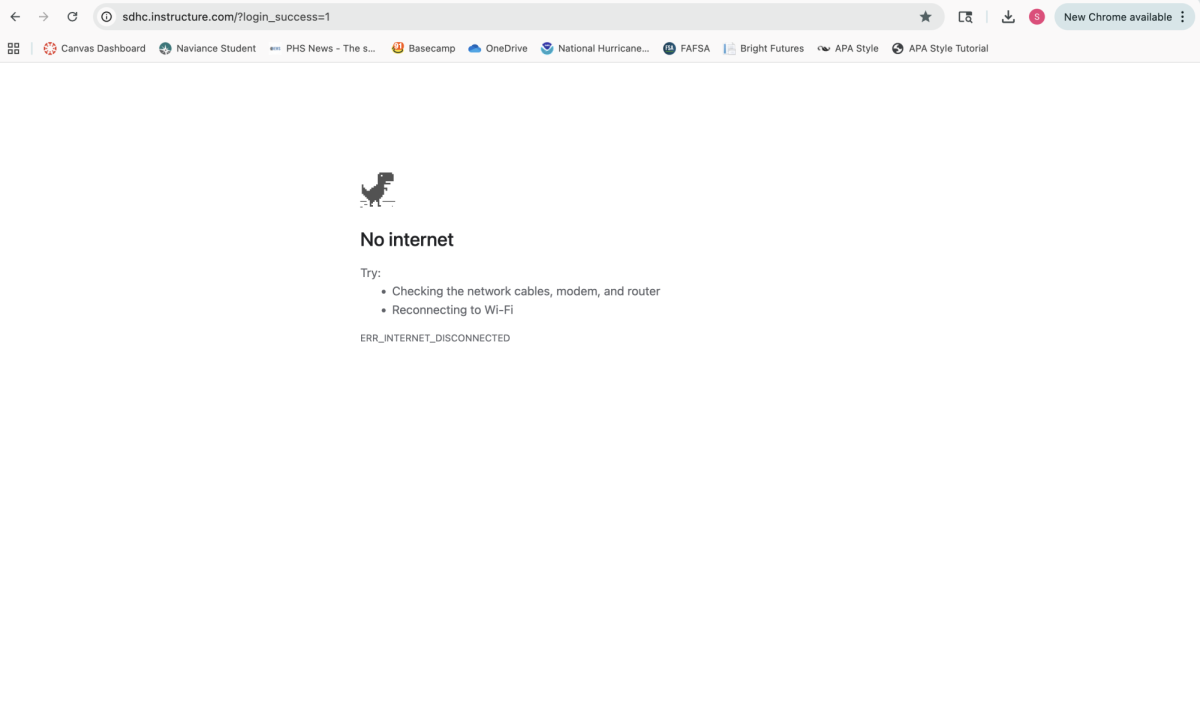On Monday, Oct. 20, 2025, a widespread Amazon Web Services (AWS) outage sent shockwaves across the internet, leaving countless websites and applications offline—including Canvas, the learning management system used by schools and universities nationwide. The disruption hindered students’ and teachers’ ability to access coursework, submit assignments and communicate online.
Background
According to the official AWS Health Dashboard, Amazon Web Services experienced an outage in its US-EAST-1 region, which caused many of its services to slow down or stop working. Some of the affected services were Elastic Compute Cloud, which lets people operate virtual computers; Lambda, which runs programs automatically; Dynamo Database, which stores data; Identity and Access Management, which controls accounts and permissions; Simple Queue Service, which helps different programs send messages to each other; Redshift, which stores large amounts of data for analysis; and Connect, which handles calls and chat sessions.
The issue began when Dynamo Database encountered connectivity issues caused by a problem with the Domain Name System—in other words—the internet’s “address book.” Because many other AWS services depend on Dynamo Database, they also began encountering failures. For example, Elastic Compute Cloud could not start new virtual computers, and network checks failed, which affected Lambda and CloudWatch operations.
Amazon Web Services alleviated the issue by slowing down operations to prevent more errors while systems recovered. By 3:01 p.m. Eastern Time on Oct. 20, most services were back to normal. However, some, such as Redshift and Connect, continued processing backlogged tasks that had piled up.
Impact on Students and Staff at Plant
While the issue affected many regions across the country, its impact was particularly significant here. At Plant, certain classes are entirely dependent on technology for instruction and learning activities. A day disrupted by this issue is valuable instructional time lost and throws off lesson plans.
Jenise Gorman, the AP Seminar teacher, didn’t let technology stop her though. “At first, I was frustrated because I couldn’t display my carefully designed Canva slides, but I quickly found a way to make it work,” Gorman said. “I switched to showing my agenda and directions using a Word document—it wasn’t pretty, but it got the job done. It was stressful for maybe two minutes, but I wasn’t going to waste class time trying to fix it. I’m a problem-solver—whether that means using my hotspot, expo markers or loose-leaf paper, we’ll make it happen. Technology might fail, but learning doesn’t stop. Some students hoped for a free day, but once they saw I had backup plans ready, they got to work. When everything finally started working again, my first thought was, ‘I’m behind on grading,’ which I don’t love—but coffee helps.”
Similarly, students expressed frustration with the issue. Megan Canady, a junior, said “When I was trying to log onto Canvas to submit my assignments for AP Bio, I was unable to log in to Canvas, which worried me, and I was scared it would affect my grade a lot. The Remind app was also down, so I couldn’t contact my teacher, which really stressed me out, especially since we have a test tomorrow. I felt like the day was wasted, and when the issues were resolved, I was beyond grateful.”
In conclusion, while the issues significantly affected the school day, it’s reasonable to say the impacts won’t be long-lasting. Plant High School is no stranger to disruptive events, such as the hurricanes last year, which closed the school for over two weeks. Staff and students are prepared to move past this and make any needed adjustments.
AWS Outage Timeline by Vivienneharris 2902

